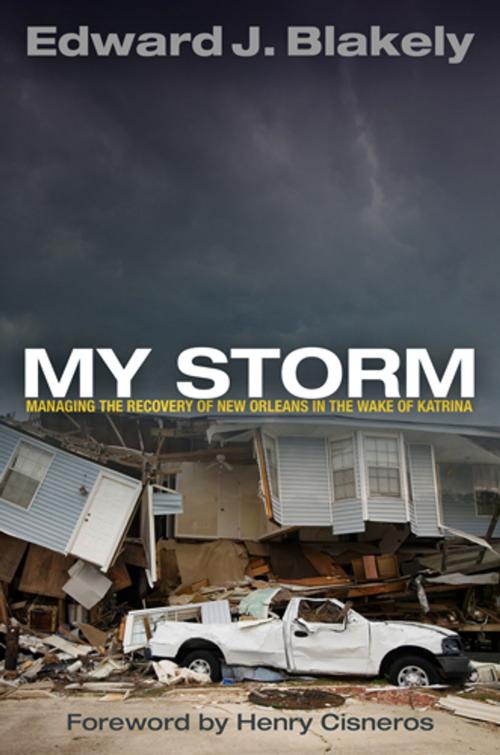My Storm
Managing the Recovery of New Orleans in the Wake of Katrina
Nonfiction, Social & Cultural Studies, Political Science, Politics, Regional Planning, Science & Nature, Nature, Social Science| Author: | Edward J. Blakely | ISBN: | 9780812207064 |
| Publisher: | University of Pennsylvania Press, Inc. | Publication: | January 31, 2012 |
| Imprint: | University of Pennsylvania Press | Language: | English |
| Author: | Edward J. Blakely |
| ISBN: | 9780812207064 |
| Publisher: | University of Pennsylvania Press, Inc. |
| Publication: | January 31, 2012 |
| Imprint: | University of Pennsylvania Press |
| Language: | English |
Edward J. Blakely has been called upon to help rebuild after some of the worst disasters in recent American history, from the San Francisco Bay Area's 1989 Loma Prieta earthquake to the September 11 attacks in New York. Yet none of these jobs compared to the challenges he faced in his appointment by New Orleans Mayor Ray Nagin as Director of the Office of Recovery and Development Administration following Hurricane Katrina.
In Katrina's wake, New Orleans and the Gulf Coast suffered a disaster of enormous proportions. Millions of pounds of water crushed the basic infrastructure of the city. A land area six times the size of Manhattan was flooded, destroying 200,000 homes and leaving most of New Orleans under water for 57 days. No American city had sustained that amount of destruction since the Civil War. But beneath the statistics lies a deeper truth: New Orleans had been in trouble well before the first levee broke, plagued with a declining population, crumbling infrastructure, ineffective government, and a failed school system. Katrina only made these existing problems worse. To Blakely, the challenge was not only to repair physical damage but also to reshape a city with a broken economy and a racially divided, socially fractured community.
My Storm is a firsthand account of a critical sixteen months in the post-Katrina recovery process. It tells the story of Blakely's endeavor to transform the shell of a cherished American city into a city that could not only survive but thrive. He considers the recovery effort's successes and failures, candidly assessing the challenges at hand and the work done—admitting that he sometimes stumbled, especially in managing press relations. For Blakely, the story of the post-Katrina recovery contains lessons for all current and would-be planners and policy makers. It is, perhaps, a cautionary tale.
Edward J. Blakely has been called upon to help rebuild after some of the worst disasters in recent American history, from the San Francisco Bay Area's 1989 Loma Prieta earthquake to the September 11 attacks in New York. Yet none of these jobs compared to the challenges he faced in his appointment by New Orleans Mayor Ray Nagin as Director of the Office of Recovery and Development Administration following Hurricane Katrina.
In Katrina's wake, New Orleans and the Gulf Coast suffered a disaster of enormous proportions. Millions of pounds of water crushed the basic infrastructure of the city. A land area six times the size of Manhattan was flooded, destroying 200,000 homes and leaving most of New Orleans under water for 57 days. No American city had sustained that amount of destruction since the Civil War. But beneath the statistics lies a deeper truth: New Orleans had been in trouble well before the first levee broke, plagued with a declining population, crumbling infrastructure, ineffective government, and a failed school system. Katrina only made these existing problems worse. To Blakely, the challenge was not only to repair physical damage but also to reshape a city with a broken economy and a racially divided, socially fractured community.
My Storm is a firsthand account of a critical sixteen months in the post-Katrina recovery process. It tells the story of Blakely's endeavor to transform the shell of a cherished American city into a city that could not only survive but thrive. He considers the recovery effort's successes and failures, candidly assessing the challenges at hand and the work done—admitting that he sometimes stumbled, especially in managing press relations. For Blakely, the story of the post-Katrina recovery contains lessons for all current and would-be planners and policy makers. It is, perhaps, a cautionary tale.















